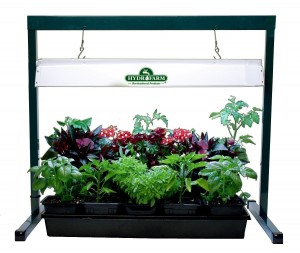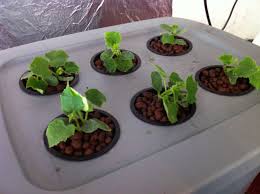Perhaps you’ve heard about home hydroponics, a method of hydroculture in which plants are grown without using soil.
With this non-traditional method, plants grow in a medium while being supplied with nutrient solutions and even artificial light.
With this kind of controlled environment, it becomes possible to bypass some of the requirements that make traditional agriculture very difficult.
Hydroponics has been very successful in places where agriculture generally isn’t practiced, such as the deserts of Arizona or the arid landscape of Israel.
In areas where arable land is scarce like the Middle East or where space itself is hard to come by, like the highly urbanized areas of Japan, hydroponics has proved an invaluable aid to feeding rapidly growing populations.
You’ll notice that the aforementioned areas tend to be low in farmland but high in capital and it’s true that hydroponics demands a relatively high initial investment when practiced on a large scale.
If you’re just a gardening aficionado however, or even an amateur horticulturist, you might enjoy growing your own hydroponic garden at home.
.
.
.
.
How To Do Hydroponics At Home
How To Get Started With Hydroponics
To get started with hydroponics at home, and to do it correctly, you’ll need to be very well-informed.
After all, this method is far removed from tossing a seed into the ground and leaving the rest to Mother Nature. You’ll need some trays to hold your plants, a medium to grow them in and the right nutrient solutions.
What Supplies Do You Need To Grow Things Hydroponically?
Implements for irrigation are also necessary. You’ll have to get an aquarium pump, drainage tubing and a tank of some sort to act as a reservoir.
Of course, you shouldn’t forget the most important element – your plant cuttings or seeds.
Once you’ve prepared all the necessary materials, you can start building your setup.
You’ll have to stabilize your plants in the chosen medium, which can be coconut husks, clay beads, wood or mineral wool. You’ll then have to dilute the nutrient solution with water in the reservoir tank and set up your irrigation and drainage systems.
When this is done, all you have to do is set the system to flood the tray where your plants are sitting about twice a day. You’ll also have to remember to check PH levels every two weeks.
If you have a lot of natural sunlight available, you’ll be able to grow tomatoes and cucumbers. Otherwise, salad greens like spinach and lettuce are your best bets. But not to worry – if you don’t get much sun, artificial grow lights will work just fine, although they will be an added expense.




